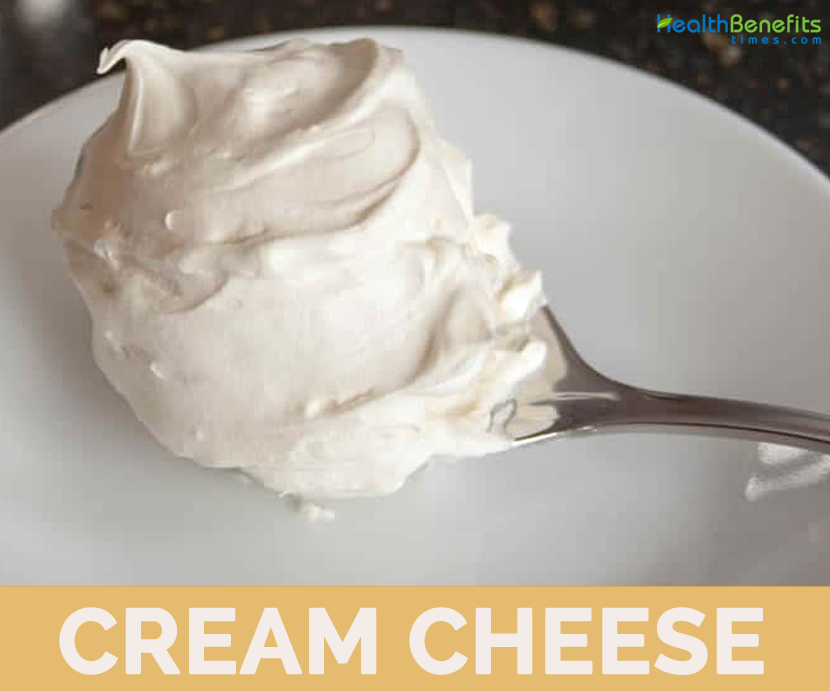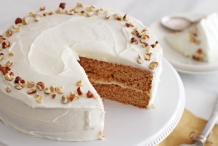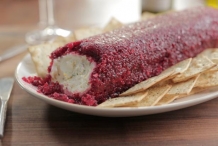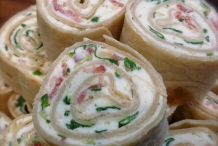Cream cheese is firmed with the use of lactic acid and so needs to be consumed fresh. It has a relatively short life even when refrigerated. Cream cheeses made using traditional methods tend to be more powdery than spreadable while those with stabilizers like guar gum are more firm. Cream cheese is suitable for vegetarians since it uses acid, such as citric acid to clot the milk.
Cream cheese has a mild, sweet taste with a pleasant slight tang. It is a smooth, spreadable cheese at room temperature and comes in various flavored varieties including those with herbs, fruits blended in. The cheese is widely consumed in United States where it used to enrich cheesecakes, frostings, dips, toppings, sweet & savory dishes and desserts. It is also used to make flavorful desserts with colorful fruit combinations such as blueberries, raspberries and kiwis.
Today, cream cheese has more uses than ever. This mild-flavored soft cheese can be used in both sweet and savory dishes. It pairs well with various herbs, spices, fruits, and vegetables, making it ideal to use in dips and spreads.
History
Many people consider cream cheese to be a essentially American product, there are records of similar cheeses being sold in Europe dating back to the 16th century.
In 18th century England, an early version of the famous Stilton cheese was known to be made in a similar fashion to today’s cream cheese, while in France there are references of cream-rich cheeses being made as far back as the 1540s, although these were probably aged.
It’s American dairy owner William Lawrence of Chester, N.Y., who is recognized with making the first cream cheese in 1872, which many believe happened as he tried to re-create NeufChatel en Bray, an aged cheese from the Normandy region of France. Lawrence began selling it soon afterward in the foil bricks that are still familiar today and it was an almost instant success.
There are varying stories about how cream cheese became known as Philadelphia Cream Cheese, with some claiming that it was because the cheese was packed and distributed from the city. Most believe, though, that it referenced the fact that Philadelphia was known as a city with very high standards of food production.
Culinary Uses
- Try mixing cream cheese with a few tablespoons of fresh chopped chives to make a delicious filling for an omelet.
- Consider adding the same mix to a pan of slow-cooked scrambled eggs to elevate an otherwise humble breakfast dish.
- Cream cheese is obviously perfect for making cheesecake, but for a different take on dessert try mixing the cheese with a compote of berries to make a filling for turnovers or with grated chocolate and lemon zest as an accompaniment to pies and tarts.
- Cream cheese is often spread on bread, bagels, crackers, etc., and used as a dip for potato chips and similar snack items, and in salads.
- It can be mixed with other ingredients, such as yogurt or pepper jelly, to make spreads.
- Cream cheese can be used for many purposes in sweet and savory cookery, and is in the same family of ingredients as other milk products, such as cream, milk, butter, and yogurt.
- It can be used in cooking to make cheesecake and to thicken sauces and make them creamy.
- Cream cheese is sometimes used in place of or with butter when making cakes or cookies, and cream cheese frosting.
- It is the main ingredient in the filling of crab rangoon, an appetizer commonly served at U.S. Chinese restaurants.
- It can also be used instead of or with butter or olive oil in mashed potatoes, and in some westernized sushi rolls.
How to make homemade Cream Cheese
Ingredients
- 2 cups cream
- 2 cups milk
- 1 package cream cheese starter culture OR (1/8 teaspoon) Mesophilic starter culture
- Fine cheesecloth or a tea towel
- Sea salt to taste (optional)
Instructions
- Use a glass container to hold your cream/milk and gently stir in the starter culture.
- Loosely cover (not airtight!).
- Leave on countertop 8 to 12 hours to culture, time varies depending on temperature.
- It’s ready when it somewhat resembles yogurt.
- Dump thickened cream into cheesecloth and allow whey to drip out at least 12 hours (the longer it drips, the firmer your cheese will be).
- Scrape out of cheesecloth and lightly salt to taste (salt is optional, but it lasts longer).
- Store in an airtight container in fridge.
Recipe
Puff Pastry Heirloom Tomato Tart
Ingredients
- 1 sheet frozen puff pastry (half of a 17-ounce package), thawed
- All-purpose flour, for dusting
- 1 8-ounce package cream cheese, at room temperature
- 1/3 cup sour cream
- 1/2 teaspoon finely grated lemon zest
- 1 teaspoon fresh lemon juice
- 1/4 teaspoon sugar
- Kosher salt and freshly ground pepper
- 2 tablespoons finely chopped fresh chives,
- plus more for topping
- 12 ounces assorted small heirloom tomatoes, halved
Directions
- Preheat the oven to 400 degrees F. Unfold the puff pastry onto a floured piece of parchment paper and roll out into a 9-by-11-inch rectangle.
- Score1/2 inch in from the edge, all the way around, using a paring knife.
- Slide the pastry (on the parchment) onto a baking sheet.
- Poke the middle all over with a fork, then bake until golden brown, 20 to 25 minutes.
- Transfer to a rack and let cool completely.
- Meanwhile, combine the cream cheese, sour cream, lemon zest, lemon juice, sugar, 1/2 teaspoon salt, and pepper to taste in a large bowl and beat with a mixer on medium speed until smooth; stir in the chives.
- Spread evenly over the cooled crust. Arrange the tomatoes on top; season with salt and pepper and top with more chives.
- Customize this tart with your favorite toppings. For our cover, we added grilled corn.
Pumpkin Cake bars with cream Cheese Frosting
Ingredients
- 4 large eggs
- 1 2⁄3 cups white sugar
- 1 cup vegetable oil
- 1 (15 ounce) can pumpkin puree
- 2 cups all-purpose flour
- 2 teaspoons baking powder
- 1 teaspoon salt
- 1 teaspoon baking soda
- 2 teaspoons ground cinnamon
- 6 ounces cream cheese
- 6 tablespoons butter, softened
- 3 cups confectioners’ sugar
Directions
- Preheat oven to 350°F.
- Grease and flour one glass 9 x 13 inch pan.
- In a mixing bowl, beat together the eggs, sugar, oil and pumpkin.
- Sift together the flour, baking powder, salt, baking soda, salt and cinnamon; add to wet ingredients and mix thoroughly.
- Spread into prepared pan.
- Bake at 350° for 25 to 30 minutes.
- Remove from oven and allow cooling.
- For the frosting: beat together the cream cheese, butter and confectioner’s sugar.
- Evenly spread over bars after they have cooled.
Comments
comments
| Cream Cheese Quick Facts | |
|---|---|
| Name: | Cream Cheese |
| Origin | United States |
| Colors | White |
| Shapes | Creamy and spreadable |
| Taste | Creamy, mild, sweet |
| Calories | 51 Kcal./cup |
| Major nutrients | Total Fat (14.26%) Vitamin A, RAE (6.43%) Sodium (3.07%) Isoleucine (2.81%) Valine (2.70%) |



